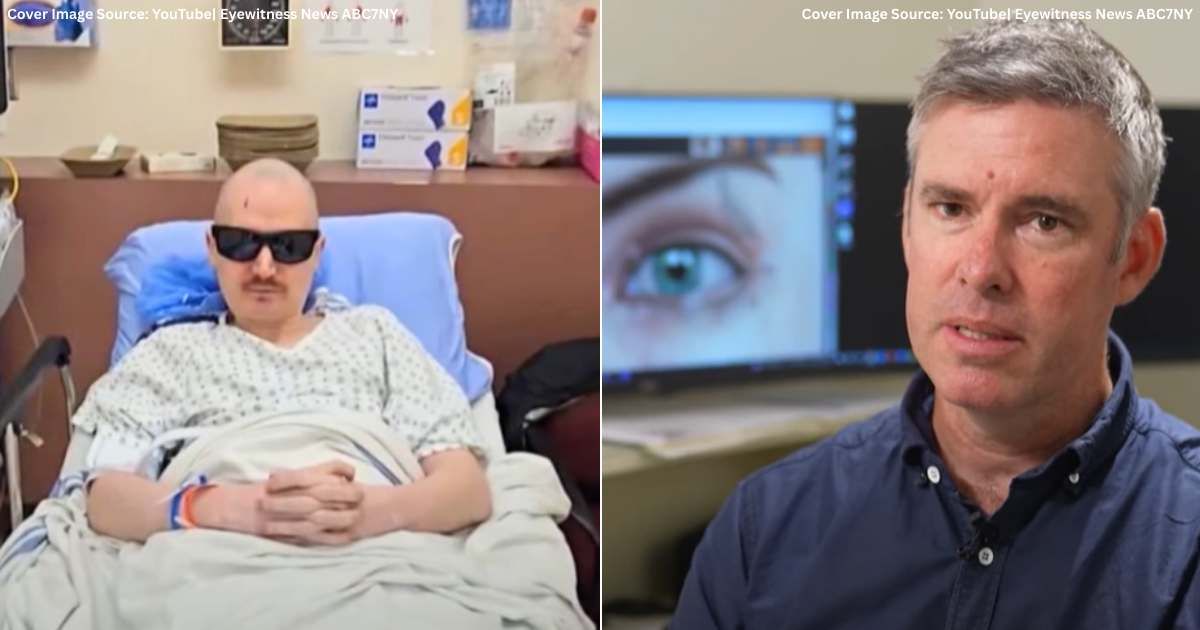Man was blind for 20 years—then doctor's put his tooth in his eye to help him restore his vision

The field of medicine keeps expanding its potential in the most mind-boggling ways. A then-13-year-old Brent Chapman’s life turned upside down after he lost most of his vision, CNN stated. Despite around 50 surgeries, years of treatment, hopes and whatnot, things didn’t seem to get better. After all the possible and tried and tested measures didn’t work, Dr. Greg Moloney, clinical associate professor of corneal surgery at the University of British Columbia, tried something rare. He implanted Chapman’s tooth and used it to help the young man see again.

It all started with an ibuprofen for the then-teenager. A reaction caused him to get burns all over his body, including the surface of his eye. Chapman spent 27 days in a coma and eventually, he lost his left eye’s vision to an infection. The right eye, too, had been deteriorating. He had nearly lost all of his vision, his life turned upside down and before he knew it, he was going through rigorous surgeries to fix things. “For the last 20 years, I’ve been having close to 50 surgeries trying to save this eye, most of them cornea transplants,” Chapman explained. Medical professionals were trying their best to save his right eye and restore his vision.

“We would put a new cornea in. It would last sometimes just a few months or even up to years but it would just kind of never heal,” he remarked. That’s when Dr. Moloney suggested a rare procedure — tooth-in-eye or osteo-odonto-keratoprosthesis. Developed in the 1960s, it involves using a person’s tooth as an implant for the eye, ABC7NY reported. It was reportedly the last resort to save Chapman’s sight. Dr. Ben Kang, Chapman’s oral maxillofacial surgeon and division head of Oral & Maxillofacial Surgery at Vancouver General Hospital, explained how the process would unfold. A canine tooth, known to be the longest tooth in the human mouth, is extracted with a portion of the bone.

It is then shaved into a 4 millimeter-thick block and drilled to hold a plastic optical cylinder. This is then implanted into a person's cheek or eyelid and remains there for tissue to grow around it. Once this happens, it is replaced with the damaged cornea through surgical attachment. “The tooth is an ideal structure for holding a focusing element in place. It’s hard, it’s rigid, it survives in poor environments and the body accepts it because it’s part of its own,” Dr. Moloney explained. After months of waiting, hoping, experimenting and wondering, Chapman’s surgery came through. He now has 20/30 vision and was able to see. It was a feeling no one could describe.

As he redefines his life, Moloney is delighted that the long wait yielded something priceless. “It’s like watching people come out of a time capsule and reintroduce themselves to the world. It’s highly emotional for us,” he remarked. “I’m very happy and am just taking in the world again, appreciating the little things. It’s been kind of surreal and kind of a euphoric feeling to it,” Chapman said. He added that, having lost hope during the previous procedures, these new results have “opened a new door for me and a new chapter in my life.”
More on Amplify
This article originally appeared 2 months ago.
